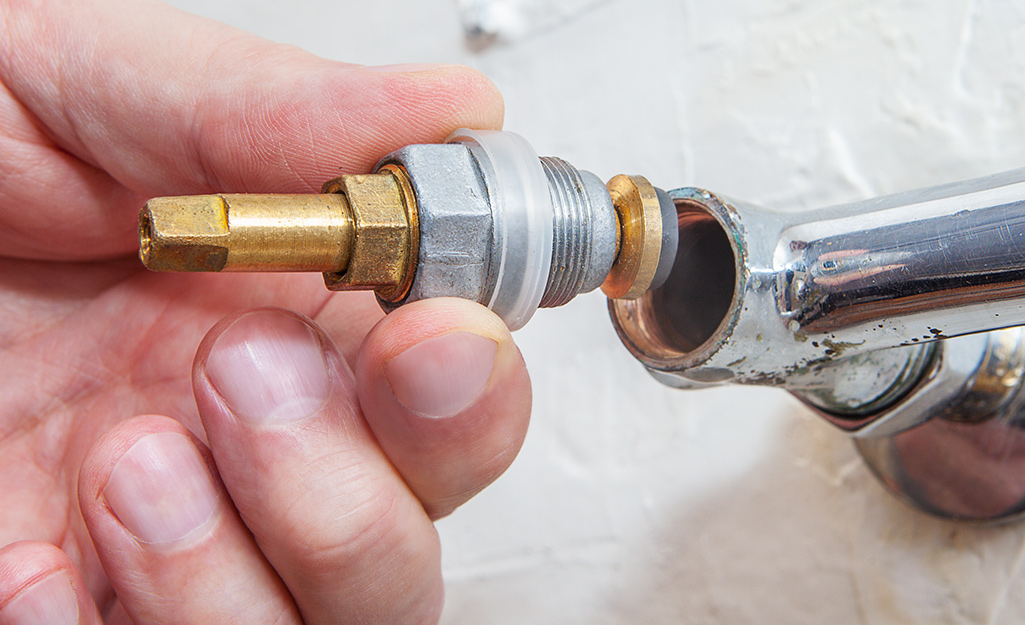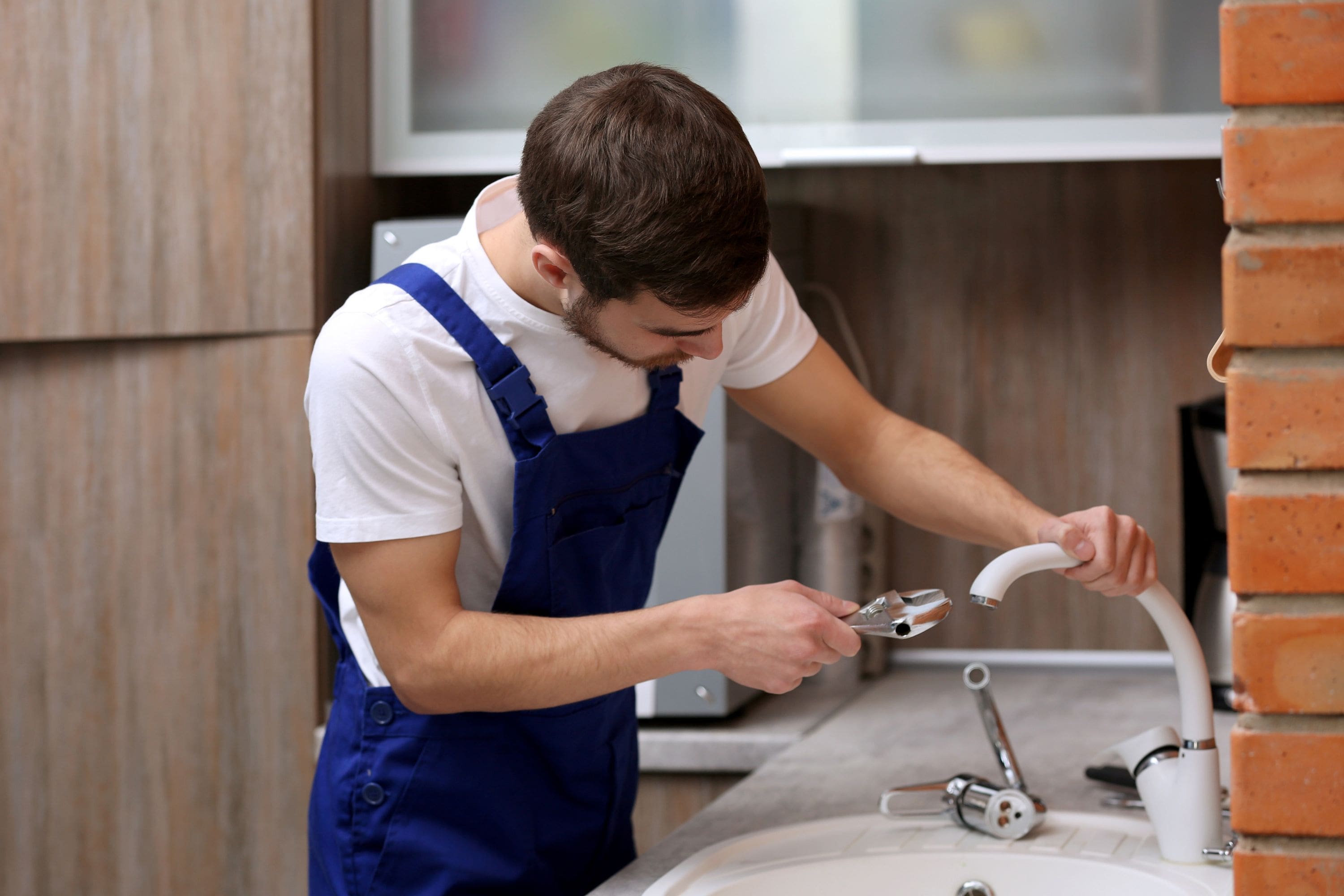Learning the Relevance of Dealing with a Malfunctioning Faucet
Learning the Relevance of Dealing with a Malfunctioning Faucet
Blog Article
This great article down the page involving 4 Common Reasons for a Leaky Faucet is amazingly motivating. Don't miss out on it.

Trickling taps may appear like a small aggravation, but their impact exceeds just the annoyance of the sound. From drainage to incurring unnecessary financial expenses and health dangers, disregarding a dripping tap can lead to various effects. In this post, we'll explore why it's critical to resolve this usual household problem without delay and properly.
Wastefulness of Water
Environmental Impact
Dripping faucets contribute significantly to water wastefulness. According to the Environmental Protection Agency (EPA), a single tap leaking at one drip per second can lose greater than 3,000 gallons of water each year. This not just strains water resources but additionally influences ecosystems and wild animals based on them.
Financial Prices
Boosted Water Costs
Beyond the environmental influence, dripping faucets can pump up water bills significantly. The collected wastefulness gradually equates right into higher energy costs, which could have been prevented with timely repair work.
Prospective Home Damage
Furthermore, extended leaking can lead to damage to fixtures and surfaces bordering the faucet. Water accumulation can trigger staining, corrosion, and even structural concerns if left ignored, causing extra repair service expenses.
Wellness Issues
Mold And Mildew and Mildew Development
The constant existence of dampness from a leaking faucet produces a perfect environment for mold and mildew and mold development. These fungi not only jeopardize interior air top quality but likewise pose wellness dangers, particularly for people with breathing problems or allergic reactions.
Waterborne Conditions
Stagnant water in dripping faucets can come to be a breeding place for germs and various other virus, boosting the danger of waterborne diseases. Impurities such as Legionella bacteria thrive in stagnant water, possibly causing major diseases when consumed or breathed in.
DIY vs. Expert Fixing
Benefits and drawbacks of DIY Repair Service
While some may attempt to fix a trickling tap themselves, DIY repair work come with their very own collection of obstacles. Without correct expertise and tools, do it yourself efforts can intensify the issue or result in incomplete repair work, extending the issue.
Benefits of Hiring an Expert Plumber
Working with a specialist plumber makes sure that the underlying reason for the trickling tap is addressed properly. Plumbing technicians possess the knowledge and tools to detect and repair tap issues effectively, conserving time and minimizing the risk of more damage.
Step-by-Step Overview to Repairing a Dripping Tap
Devices Needed
Prior to attempting to repair a dripping faucet, collect the essential tools, including a flexible wrench, screwdrivers, replacement components (such as washing machines or cartridges), and plumber's tape.
Usual Faucet Issues and Their Solutions
Recognize the type of tap and the specific problem creating the drip. Common problems consist of damaged washing machines, corroded shutoff seats, or malfunctioning O-rings. Describe supplier guidelines or on the internet tutorials for step-by-step support on repairs.
Preventive Measures
Routine Upkeep Tips
To stop dripping taps, perform routine maintenance such as cleaning up aerators, examining for leakages, and replacing worn-out parts promptly. Additionally, consider mounting water-saving tools or upgrading to more reliable components.
Value of Prompt Fixes
Attending to dripping faucets as quickly as they're discovered stops more water wastage and prospective damage, eventually saving both water and money in the long run.
Influence On Residential Or Commercial Property Value
Understanding of Well-Maintained Property
Maintaining a home in good condition, including attending to maintenance concerns like dripping taps, improves its regarded value and worth amongst possible buyers or occupants.
Impact on Resale Value
Qualities with properly maintained plumbing fixtures, consisting of faucets, command greater resale worths in the realty market. Attending to leaking taps can add to a favorable perception during property examinations and arrangements.
Environmental Responsibility
Private Contribution to Preservation
Taking obligation for fixing leaking faucets lines up with wider efforts toward water preservation and environmental sustainability. Every individual's actions collectively make a substantial influence on maintaining precious sources.
Sustainable Living Practices
By focusing on prompt repair services and taking on water-saving habits, people contribute to sustainable living methods that benefit both present and future generations.
Conclusion
Resolving a trickling tap surpasses simple ease; it's a necessary action toward preserving water, reducing monetary prices, and safeguarding wellness and residential property. Whether with DIY repairs or professional aid, taking action to fix dripping taps is a little yet impactful way to promote accountable stewardship of resources and add to a healthier, a lot more sustainable future.
How to Fix a Dripping or Leaky Faucet
A leaking faucet is one of the most common problems that homeowners encounter, but it being commonplace doesn’t make it any less annoying. The constant drip drip drip of a leaking bathtub faucet, showerhead, or sink tap can disturb your home’s serenity. Left neglected, a dripping faucet can also result in higher water bills and discoloration or mold growth in your sink or plumbing fixtures.
Fortunately, you don’t have to be a trained plumber to know how to stop a dripping faucet. With some basic tools, replacement parts, and a little patience, leaky faucet repair is a breeze. In this article, we’ll explain what causes dripping faucets and how you can fix them.
What Causes a Leaking Faucet?
Kitchen and bathroom faucets come in all manner of designs, but most involve some combination of valves, O-rings, seals, and washers. The O-ring is usually the weakest link, but any one of these pieces can wear down over time. Heat, moisture, temperature fluctuations, minerals, mold, and movement can contribute to warping and corrosion, breaking the watertight seal. This just comes with the territory of being a homeowner. Everything is always subject to wear and tear, and some component parts of your appliances and fixtures need to be replaced on occasion. At least replacement O-rings are cheap!
More rarely, dripping faucets can be a symptom of excessively high water pressure. Were this the case in your home, you would probably notice that the leak is not isolated to one faucet. Water pressure issues are harder to resolve on your own. We recommend contacting a professional plumber if you suspect your water pressure is too high.
How to Fix a Dripping Faucet
Pipe wrench or monkey wrench Allen wrench set Screwdrivers Old towel or rag Shut off the water.
Before you do anything, you need to turn off the water to keep from drenching your kitchen or bathroom. You should find a valve under the sink and against the wall. Once you’ve turned this valve, try turning the faucet on to confirm that the water source has been cut off.
If you can’t locate your local valve for the faucet you’re working on, you can always shut off the water to the house at the main valve. Of course, this will prohibit anyone from using the sinks, showers, or toilets while you’re working on the faucet that’s giving you trouble.
Plug or block the drain.
You’ll be disassembling the faucet and removing some small bits of hardware. Plug the drain with a stopper or rag to avoid the possibility of a small screw falling into your P-trap.
Take apart the faucet assembly.
There are several varieties of kitchen and bathroom faucets, each with its own manner of assembly. For detailed instructions on how to disassemble your faucet, you can refer to the fixture’s manual or contact the manufacturer. If you know whether you have a ball, disc, cartridge, or compression faucet, you can find detailed schematics online.
In general, you need to begin by removing the faucet handles. You might notice a small screw that you’ll need to remove with a screwdriver or Allen wrench. If you don’t see any visible securing hardware, it’s likely hidden under a decorative cap that can be unscrewed or popped off with flathead screwdriver.
Remove each piece methodically, consulting a schematic when necessary. Take notes or arrange the pieces in such a way to make it easier to correctly reassemble the faucet later.
Remove the cartridge.
Once you’ve removed the handles and securing hardware, you should be able to remove the valve cartridge or stem. Some cartridges will slide right out. Other faucet models will require you to loosen a nut with a pipe wrench before you can remove the valve stem.
Examine the exposed hardware.
With the cartridge or stem removed, inspect the component parts. Check the rubber O-rings for wear and tear. Also examine the seat washer for corrosion or other damage. These pieces are usually the responsible parties for a dripping faucet, but it’s worth inspecting the other component parts while you have the faucet disassembled.
Find replacement parts.
Once you’ve identified which faucet component has failed, find an identical replacement. Your local hardware store should have O-rings, seat washers, and other standard components in stock. If you have a luxury or uncommon faucet, you may have to contact the manufacturer for a replacement part.
It’s a good idea to take your old parts with you to the hardware store so you can compare them with the store’s inventory and be sure you’re purchasing the correct replacement.
Reassemble the faucet.
With your new parts in hand, reconstruct the faucet and handles. Don’t be tempted to overtighten screws or nuts. You might think this could create a better seal, but it can instead damage or bend a delicate part of the assembly and create a new problem for you.
Turn on the water and test the faucet.
The only thing left to do is test your work. Unplug the sink, turn the water back on, and try the faucet. Congratulate yourself on a job well done!
https://www.libertyhomeguard.com/how-to-fix-a-dripping-or-leaky-faucet/

We hope you enjoyed our section on What Causes Leaky Faucets & How To Fix Them. Thank you for finding the time to browse our content. Appreciated our piece? Please quickly share it. Let somebody else check it out. I recognize the value of your readership.
Report this page